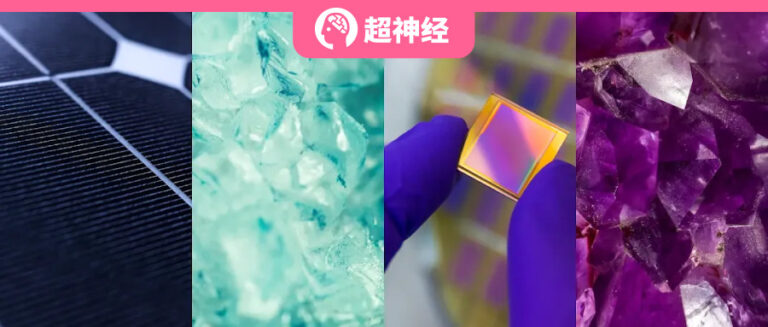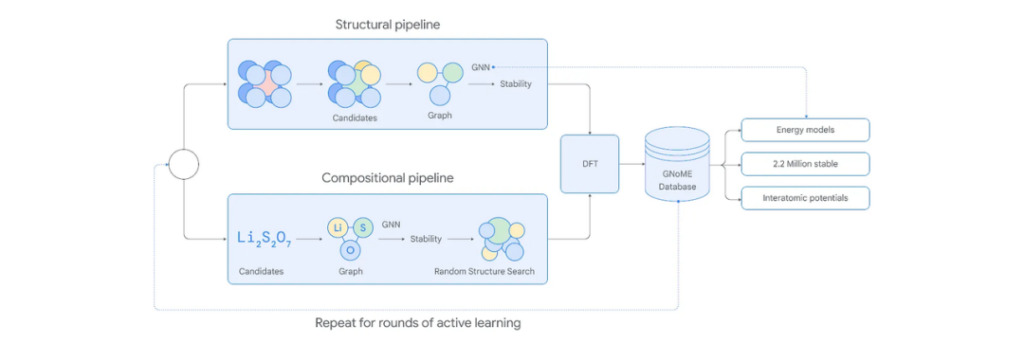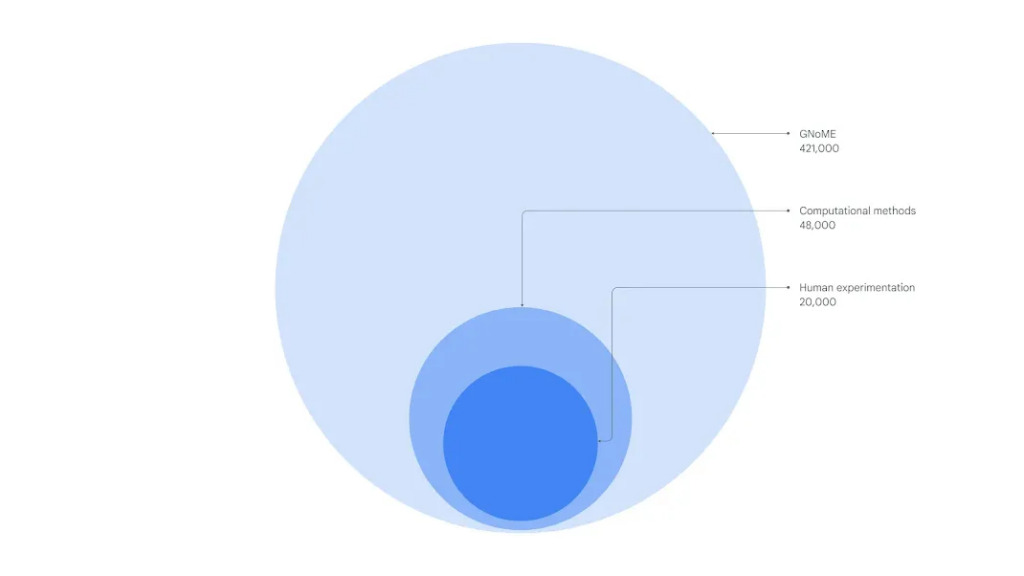800 Years Ahead of Humans? DeepMind Releases GNoME, Using Deep Learning to Predict 2.2 Million New Crystals

The AI tool GNoME has discovered 2.2 million new crystals, equivalent to 800 years of experimental output by human scientists, of which 380,000 new crystals can become stable materials for future high-tech.
From computer chips and batteries to solar panels, they all rely on structurally stable inorganic crystals.
Traditionally, discovering or developing a new stable inorganic crystal often requires months of arduous experiments. Now, with the help of the deep learning tool released by Google DeepMind, GNoME,In a short period of time, researchers discovered 2.2 million new crystals (equivalent to the knowledge accumulated by human scientists in nearly 800 years).Among them, 380,000 new crystals have stable structures, making them the potential new materials most likely to be synthesized experimentally and put into use.

Read the original paper:
https://www.nature.com/articles/s41586-023-06735-9
01 GNoME: A SOTA GNN Model for New Materials Research and Development
GNoME, the full name of which is Graph Networks for Materials Exploration, is a SOTA GNN model for new material research and development. It uses deep learning to predict the stability of new materials in a very short time.It has greatly improved the speed and efficiency of material research and development, and demonstrated the potential of using AI to develop new materials on a large scale.
Note:The input data of GNN is in the form of graph, which is similar to the connections between atoms. This feature also makes GNN particularly suitable for the exploration of new crystal materials.

GNoME process diagram
The GNoME process can be divided into 4 steps:
* Structural pipeline: Create candidates similar to known crystal structures (Candidate)
* Compositional pipeline: follows a more random approach based on chemical formulas
* Use DFT calculations (Density Functional Theory) to evaluate the output of both pipelines
* Add evaluation results to the GNoME database to inform the next round of active learning
The main purpose of the first two steps is to identify low-energy (stable) materials. The DFT technology in the third step is used to repeatedly test the model performance. The application of active learning strategy in the last step greatly improves the performance of GNoME.
02 Data Selection: A Snapshot of Datasets on the Shoulders of Previous Researchers
In the selection of data, researchers drew special attention to previous research results, including Materials Project, OQMD, WBM and ICSD.
To ensure reproducibility, GNoME uses snapshots of two datasets saved at fixed time points, including:
* Data from Materials Project in March 2021
* OQMD data for June 2021
The above two-part structure was used as the basis for all discoveries (including by SAPS) and a catalog of stable crystals was generated by GNoME.
To compare the updated data, another snapshot of the Materials Project, OQMD, and WBM was taken in July 2023. About 216,000 DFT calculations were performed with the same settings to compare the discovery rate of GNoME with that of concurrent research efforts.
References to past work:
* Materials Project:https://next-gen.materialsproject.org/
* OQMD:https://oqmd.org/
* WBM:https://www.nature.com/articles/s41524-020-00481-6
* ICSD:https://icsd.products.fiz-karlsruhe.de/
03 Experimental Results:GNoME increases the number of known stable crystals by nearly 8 times

Variation in the number of known stable crystals
The above picture shows from the inside out:
* The number of stable crystals confirmed by human experiments in the ICSD database is about 20,000
* Calculation methods from Materials Project, Open Quantum Materials Database and WBM database increase the number of stable crystals to 48,000
* GNoME increases the number of stable materials known to humanity to 421,000

Number of stable materials discovered in 2019-2022: light colors represent external databases, dark colors represent GNoME results
Between 2021 and 2023, the number of stable crystals outside of GNoME increased from 35,000 to 48,000, which is consistent with the convex hull (Convex hull) is a huge disparity compared to the 381,000 new stable crystal structures found in the 2010 Genomica journal.
The experimental results show thatThe GNoME model discovered 2.2+ million new crystals, and the updated convex hull contains 381,000 new entries.Combined with previous research, the number of stable crystals reached 421,000, which is an order of magnitude larger than the previous research result of 48,000.
04 Industry experts: Domestic representative scholars review

Research direction:Inorganic optoelectronic functional nanomaterials and related optoelectronic properties, energy storage and conversion materials and devices, new heterogeneous nanostructured photocatalysts, organic molecular materials andField Effect Transistor
Personal page:
https://kyy.bupt.edu.cn/info/1136/3409.htm

Research direction:Organic or organic-inorganic hybridThin-film solar cellsResearch, research on new flexible electronic devices based on organic semiconductors or inorganic nanomaterials, research on the application of new smart sensors, research on new memristors and their neural network applications
Personal page:
http://www.it.fudan.edu.cn/Data/View/1150

Personal page:
https://edu.iphy.ac.cn/moreintro.php?id=3190

Research direction:Computer application technology, computer technology, materials informatics and computational materials science, machine learning
Personal page: